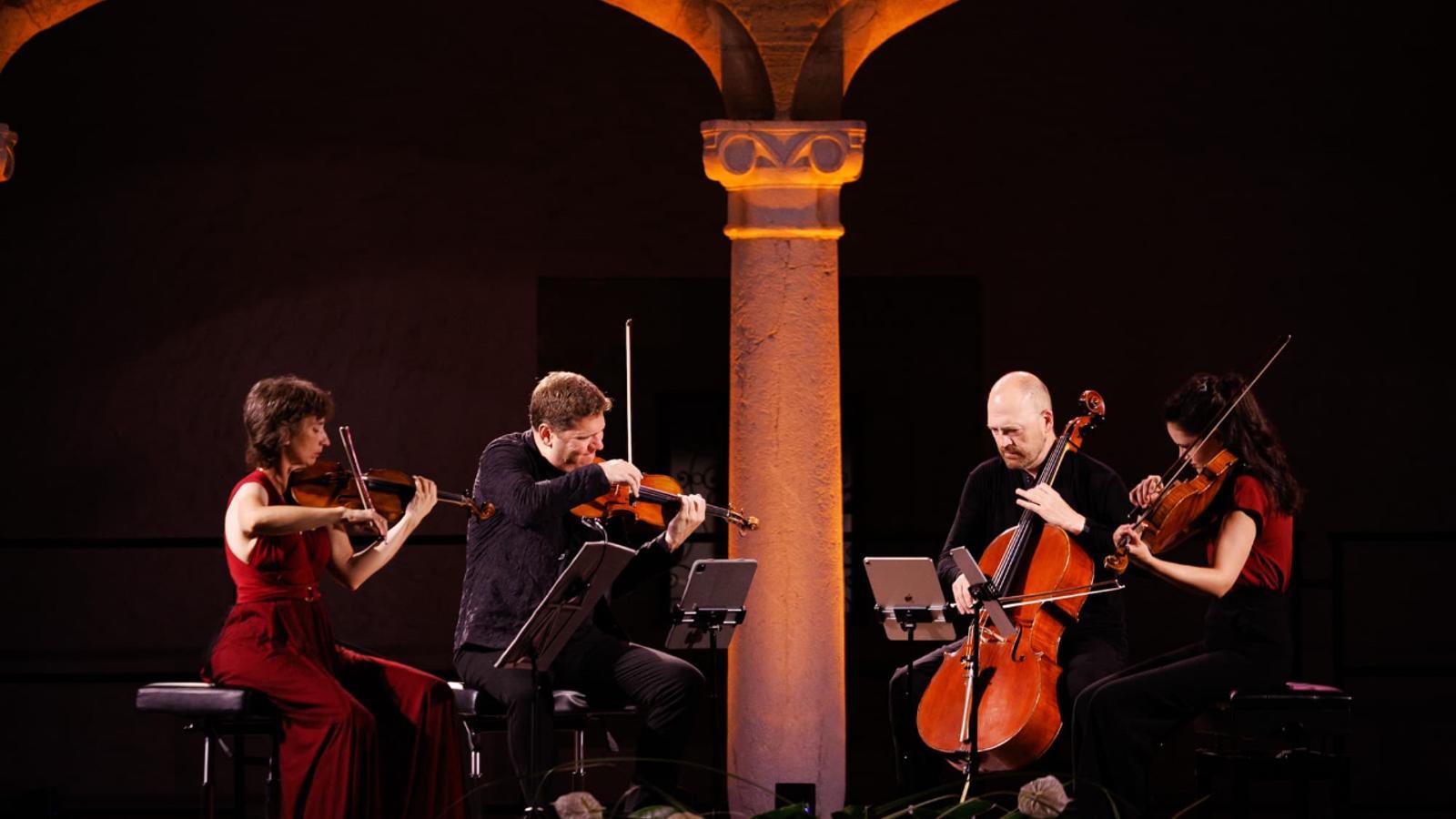They are the Casals Quartet
Any surprise could only be negative, which, on the other hand, is more than unlikely.


PalmThey're coming back from the Salzburg Festival, last Thursday they enchanted the audience at the Pollença Festival, today, Friday, they're playing at the Jordi Savall in Santes Creus, then they'll be back at the Schubertiade in Vilabertran, and the Pierre Boulez in Berlin awaits them... A calendar that serves to contextualize and confirm their career and prestige. They are the Casals Quartet. That said, any surprise could only be negative, which, on the other hand, seems more than unlikely. As for the program they performed at the third concert of the 64th Pollença Festival, they gave a brief but exquisite tour of the quartets from their institution as a stable composition and formation until the 20th century.
To begin this journey, who better than the one who founded it, Franz Joseph Haydn? After him, everything has been small variations and modulations on his model that, even now, serve both as a field of experimentation and as consolidated compositions that almost never resemble one another, while in all of them we can find some discovery of great originality. They have a single point in common: that they consist of four movements, but, as we will see, not always, although this is usually the case. There are four movements of the String Quartet in D major, Op. 76, No. 5 by Haydn, also known as Long and Funereal, lineages referring to the second movement, from where all the innovative textures and colors that spread throughout the rest of the movements emerge. The quartet displayed that extra dose of attention that is needed for its interpretation and although it seems that each one goes by its own wind, everything together results in an extremely solid and perfectly fitted together.
Shostakovich went a little further and that is why the String Quartet No. 9 He structured it in five movements, the last of which lasts twice as long as the remaining four. Four movements must not have been enough to include all the references he wanted, although in the eighth there were also five movements. The quartet is like an immense mural made of clippings from a handful of works, his own, or others' (Wagner and Tchaikovsky), tied and threaded together in such a way that the common thread is neither visible nor noticeable. An extra complexity for the performers, the result of which seemed an almost impossible coupling.
Mendelssohn, with his last composition, String Quartet No. 6 in F minor, Op. 80, when everything seemed to be given and blessed, emerged as the great protagonist of the evening. A powerful composition of such beauty, sadness and forcefulness that made the audience burst into a round of well-deserved applause, which made the group come out to take a bow, two, three, four times, of course, and when they sat down, they performed the dynamic and joyful 'Danza del molinero', byThe three-cornered hat, by Manuel de Falla, but I think we still hadn't recovered from the wonderful and relentless Finale, by Mendelssohn, a cry of rage and helplessness for the death of his beloved and admired sister, Fanny Mendelssohn.
